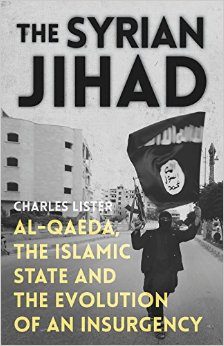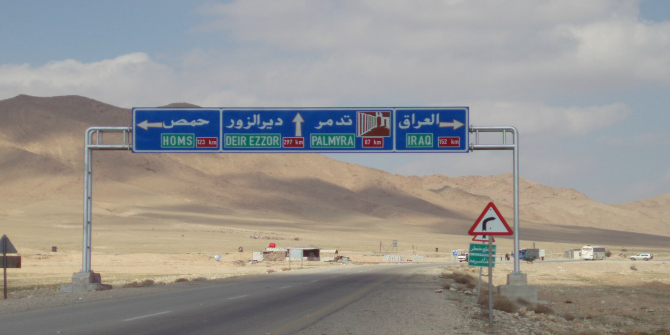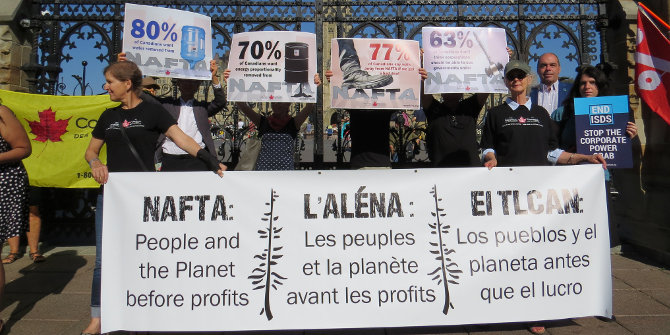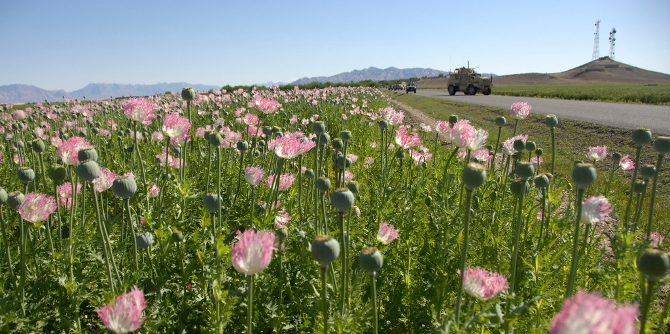In The Syrian Jihad: Al-Qaeda, The Islamic State and the Evolution of an Insurgency, Charles Lister offers a comprehensive, detailed analysis that traces the ebb and flow of the conflict in Syria from March 2011 to September 2015 and its complex dynamics. Fisayo Ajala recommends this book as an indispensable guide to the different jihadist groups, their governance structures and modes of operations for those researching terrorism in the contemporary moment.
The Syrian Jihad: Al-Qaeda, The Islamic State and the Evolution of an Insurgency. Charles Lister. Hurst. 2015.
 The eruption of the anti-Assad revolution in 2011 amongst Syrian citizens has brought about unintended outcomes. A direct consequence of this was the opening it offered Sunni jihadists to establish a bridgehead in Syria. This proved to be the Achilles heel of the revolution, as it paved the way for the emergence and growth of jihadist militancy, particularly Islamic State, Jabhat al-Nusra and a host of other jihadist groups that were midwived by the Syrian revolution.
The eruption of the anti-Assad revolution in 2011 amongst Syrian citizens has brought about unintended outcomes. A direct consequence of this was the opening it offered Sunni jihadists to establish a bridgehead in Syria. This proved to be the Achilles heel of the revolution, as it paved the way for the emergence and growth of jihadist militancy, particularly Islamic State, Jabhat al-Nusra and a host of other jihadist groups that were midwived by the Syrian revolution.
Charles Lister’s The Syrian Jihad: Al-Qaeda, The Islamic State and the Evolution of an Insurgency is based on first-hand interaction with actors in the Syrian crisis over a four-year span. By scaling the highest hurdle posed by inaccessibility to (non-)state actors, as typically encountered by studies on insurgencies, Lister’s comprehensive volume provides rare and textured details of the Syrian civil war. The book chronicles and analyses the emergence, expansion and consolidation of the jihadist element of the war. Lister presents an exhaustive analysis of the jihadist dynamics by chronicling the ebb and flow of the conflict in Syria from March 2011 to September 2015, and the changing dynamics which – as the events in Deraa, ‘the Cradle of the Revolution’ (16), in March 2011 showed – ignited a ‘spark in an atmosphere full of gas’ (14).
Lister traces the beginnings of Syria’s troubles to its flirtation with jihadism, as the country’s leadership in Assad’s first years ‘established, exploited and attempted to manage extensive relationships with jihadist militants in order to export threats to its enemies, rather than face them at home’ (31). Hence, the jihadist blowback in Syria came at great cost as it meant ‘manipulating the adversary’ (53) and framing political prisoners, who were released by the hastily contrived presidential amnesties, in Islamist and extremist terms as a way of scoring cheap political points and also to ‘hire them indirectly in the direction of terrorism’ (53). The dangerous flirtation with jihadism boomeranged as jihadists capitalised on the escalating violence, the relative weakness of the Syrian army and the failure of ‘moderate insurgents’ (3) to consolidate their stronghold on Syrian territory.
 Image Credit: The Road to Homs (David Holt CC 2.0)
Image Credit: The Road to Homs (David Holt CC 2.0)
Convincingly, Lister describes the multifarious armed groups in Syria and how they cooperate and fight among themselves, compete, form alliances and establish physical enclaves of governance and control, particularly ISIS and Jabhat al-Nusra. The existence of physical enclaves has proved to be a pull factor in attracting recruits and inspiring lone wolf attacks by jihadist sympathisers, as jihadists were extensively funded and armed, and therefore more daring and successful in battle. Not to be left out are the transnational implications that attracted groups like Boko Haram and others that pledged allegiance to IS in 2014. This was in deep contrast to the Free Syrian Army (FSA), the moderate armed Syrian opposition whose leadership camps were based in refugee camps in southern Turkey and whose financial support came from different countries with diverse interests.
As part of efforts to embed themselves within the Syrian population, Lister notes that ISIS and Jabhat al-Nusra began to implement a ‘hearts and minds’ strategy. For example, in mid-December 2012, Jabhat al-Nusra took control of flour production and distribution in opposition-controlled districts of Aleppo and set a fixed price for the sale of bread (102). In the beginning of 2013, it began to operate on a social level, introducing sharia, providing humanitarian relief and offering religious outreach (103). Likewise, ISIS presented a soft face in order to win the ‘hearts and minds’ of the local population by embarking on the provision of social services. In Aleppo, for example, it held ‘fun days’ where ‘free food was distributed and both children and adults were encouraged to take part in interactive games’. Children were challenged to speedily eat ice creams and watermelon, and also quizzed on their knowledge of the Quran, with prizes presented to winners. Adult men, meanwhile, took part in games of musical chairs, arm-wrestling and tugs of war (158).
While these actions do not run contrary to its stated goals and objectives, ISIS’s proclamation of an Islamic caliphate in mid-2014, its name change to the Islamic State and its subsequent obligation of all Muslims to pledge ba’ya (allegiance) to the caliph and the caliphate is completely ahistorical and unfounded as the ‘notion of an Islamic state that can enforce Sharia and Jihad, which are at best, personal obligations is historically unprecedented and impracticable’, as posited by Abdullahi Ahmed An-Na’im. Moreover, these articles of faith lose their religious authority when enforced by the state, and in this case, the Islamic State and its affiliates.
The failure of the international community to act decisively in Syria is another theme discussed in Lister’s book. The failure of the international community to ‘fully get behind the revolution and its fledgling Free Syrian Army’ (390) – as was the case in Libya – saw rival FSA factions fight the Assad regime with different interests as determined by their funding partners. More notably, there was the failure of the Assad plan, which was ‘imperiled by numerous ceasefire violations by government troops and armed rebels’, the disastrous US ‘train and equip’ mission (380) and the hasty comments of UN envoy, Staffan de Mistura, who saw ‘Assad as part of the solution to Syrian crises’ (331), a statement which did not go down well with the opposition. In addition, the inactivation of the Responsibility to Protect and the inability of the Security Council to hold the Syrian Government responsible for crimes against humanity showed the shortcomings of the international community in mediating the Syrian conflict.
While there appears to be no end in sight to the Syrian Jihad, Lister accurately notes that Syria’s Islamists will have to be acknowledged as ‘necessary partners’ (391) in any future peace and political process, ostensibly because of their capacity to actively spoil the peace process and determine the movement of the conflict.
The Syrian Jihad is detailed and easy to grasp, offering a comprehensive account of the Syrian civil war and the complexities involved. It proves itself as an indispensable guide to the different jihadist groups, their governance structures and modes of operations, and how these have mutated over time. It will be invaluable to students of terrorism studies who are interested in understanding the various levels and patterns of individual mobilisations and motivations; changing war tactics; how regime responses can tilt the balance; and the future of jihadist militancy which, despite its survival, is hanging in the balance.
This review originally appeared at the LSE Review of Books.
Please read our comments policy before commenting.
Note: This article gives the views of the authors, and not the position of USAPP– American Politics and Policy, nor of the London School of Economics.
Shortened URL for this post: http://bit.ly/296mURG
——————————————–
Fisayo Ajala – University of Ilorin
Fisayo Ajala obtained his first degree in History & International Studies from Ekiti State University (EKSU) and followed this up with a Master’s degree in Peace & Development Studies from the Centre for Peace and Strategic Studies, University of Ilorin, Nigeria. His current research is in democratisation, terrorism, counter-terrorism, radicalisation and deradicalisation.






